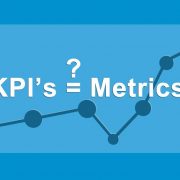The ability to measure is a sure sign of a quality organization. As marketing technology permits access more data, the gap between excellent marketing organizations and those deficient will widen — defined, in part, between those that measure well and those that do not.
To have a bigger impact on the business, marketing executives must learn which metrics matter – and to whom. When marketers get swamped with data, they often report the wrong things to the wrong people. As one CEO told me, “The day I care about how many clicks our Web site gets is the day I lose my job!”
 Three Levels of Metrics
Three Levels of Metrics
IDC’s Hierarchy of Marketing Metrics describes the business context of what marketing measures
and reports. It parses metrics into three categories that correspond to the types of decisions made at various organizational levels and highlights the links between them. The three categories are:
- Corporate-level metrics: Used at the highest level of the company to manage company productivity and performance as a whole.
- Operational-level metrics: Used to manage marketing resources and asset productivity, forecast the performance results of core marketing processes, and diagnose the “red” areas on the quarterly business review (QBR) charts.
- Execution-level metrics: Root metrics produced by marketing tactics; used to manage and optimize the marketing tactics and to coalesce to produce operational-level metrics.
Managing the Business vs. Managing Programs
Magic happens when marketing executives grasp the critical difference between operational-level metrics and execution-level metrics. Both are critical, but for different reasons. Execution-level metrics measure the results of marketing programs. They are used for optimization (did we increase conversion rates?), for testing (did emails with this color outperform?), and for customer behavior analysis (what offer should come next?). Execution-level metrics are also those that form the basis for operational-level metrics.
Operational-level metrics map the inner workings of marketing into the language of business. Each major function in a company (finance, marketing, HR, R&D) is a specialty area with its own private language. Converting each function into “business speak” by using metrics ensures that the company executives can collaborate to run the business as a whole.
Making connections between the inner workings of marketing as described by execution-level metrics and the operational metrics needed to run the business is hard. Calculating an operational-level metric requires inputs from multiple execution-level metrics, sometimes as many as 30! However, this mapping is the only way to tie the tactics of marketing to things that matter to the corporation’s productivity (profits) and performance (revenue and market share).
Data offers an opportunity for marketing to have a greater impact on the company’s goals and therefore greater power within the organization. To realize this opportunity, marketing leaders must invest in the skills, discipline, and tools needed to master data at both the execution level and the operational level.



